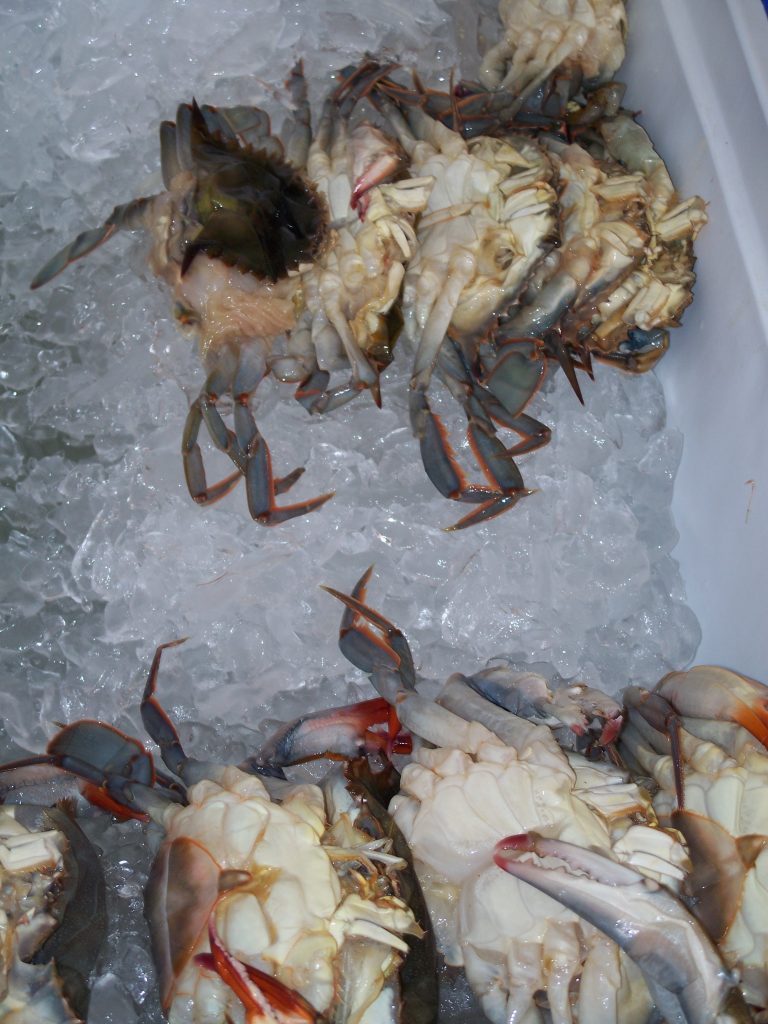Safe Seafood Buying
All seafood is only as good as the water that it comes from. That being said once it enters the buyers domain, there are steps that you should take to make sure you are choosing the best of the best. And always buy your seafood product from a trusted and reputable source.
- Fresh fish should have a mild, ocean type scent.
- Fish fillets or steaks should be moist, firm and have a shine to its flesh.
- whole fish should have bright scales, clear eyes, and gills should be bright pink or deep red.
- Live clams will “gape” open naturally, but should close when tapped with another object.
- Fresh oysters usually have fresh smell and the “liqueur” should be milky or grayish in color.
- All shellfish should have a certified take stating date and location of harvest.
- Live crabs should be alive! discard dead ones immediately.
- Buy seafood last during your shopping trip.
- Frozen fish should have no ice particles inside the package.
- Frozen fish today is usually of high quality and comparable to fresh product.

How Much To Buy
| Below is a basic guide for a single adult portion of fish and shellfish, to be served with sides. Whole Fish 3/4 to 1 lb. Fillets 6-10 oz. Steaks 6-12 oz. Scallops 8 -10 oz. Clams/Oysters 1 dozen |
Seafood Cholesterol Content
A 32oz serving of:
Clams/oysters/scallops has 40-90mg of cholesterol.
Catfish/cod/salmon, etc. has 50-70mg of cholesterol.
Crabs/lobster/shrimp has 80-160mg of cholesterol.
Seafood Storage
| Make sure seafood is packed on ice for transport home. Store fresh seafood in refrigerator in its original package until needed. Shellfish should be refrigerated in containers with clean, damp cloths on top so they can “breath”. If seafood is not used within 2-3 days – freeze it. Do not keep seafood frozen for more than 6 months since they will loose flavor and moisture. Fish fillets can be frozen in vacuum pack bags; containers with water; or individually wrapped in plastic and the placed in good quality storage bags. Shellfish can be frozen “whole” in the shell in a container or storage bag. |

KEEP RAW SEAFOOD AWAY FROM OTHER RAW OR COOKED FOOD
TO PREVENT CROSS CONTAMINATION!
The FDA Office of Seafood has a mandatory seafood inspection program called the Hazard Analysis Critical Control Point (HACCP). Under the HACCP program, seafood is monitored at critical control points during its journey from harvest to the end user, which is the consumer. In other words seafood is inspected and during its journey from dock to buyer, its handling and temperature control should be monitored. The program objective is to insure seafood quality and safety for the buyer.